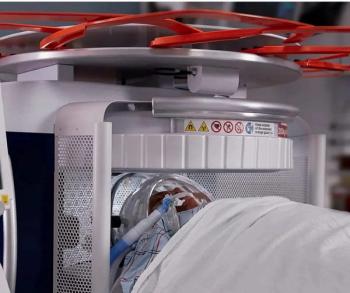
Combined CT Angiography, CT Perfusion Imaging and MACE Prediction
The combination of CT angiography and CT perfusion versus the combination of invasive coronary angiography plus single photo emission CT in predicting two-year MACE.
Using CT angiography and CT perfusion together provides similar results to invasive coronary angiography (ICA) plus single photon emission CT in predicting two-year major adverse cardiovascular events (MACE), late MACE, and event-free survival, according to a study published in
Researchers from the United States, Brazil, Japan, Germany, the Netherlands, Singapore, Denmark, and Canada sought to compare the prognostic importance (time to MACE) of combined CT angiography and CT myocardial stress perfusion imaging with that of combined ICA and stress single photon emission CT myocardial perfusion imaging.
A total of 381 patients, aged 45 to 85, participated in the study. All were enrolled in the Combined Noninvasive Coronary Angiography and Myocardial Perfusion Imaging Using 320-Detector Row Computed Tomography (CORE320) prospective multicenter diagnostic study. Their images were analyzed in blinded independent core laboratories, and a panel of physicians adjudicated all adverse events.
MACE was defined as:
• Revascularization (more than 30 days after index ICA), myocardial infarction, or cardiac death
• Hospitalization for chest pain or congestive heart failure
• Arrhythmia
Late MACE was defined similarly, except for patients who underwent revascularization within the first 182 days after ICA, who were excluded.
The results showed that a MACE occurred in 51 of 379 patients (13.5%):
• 49 revascularizations
• Five myocardial infarctions
• One cardiac death
• Nine hospitalizations for chest pain or congestive heart failure
• One arrhythmia
The 2-year MACE-free rates were similar for combined CT angiography and CT perfusion findings to combined ICA and single photon emission CT findings:
Event-free rates for CT angiography and CT perfusion versus ICA and single photon emission CT for either positive or negative results were not significantly different for MACE or late MACE. The area under the receiver operating characteristic curve (AUC) for combined CT angiography and CT perfusion (AUC = 68) was similar to that for combined ICA and single photon emission CT (AUC = 7) in the identification of MACE at two-year follow-up.
The researchers concluded that combined CT angiography and CT perfusion enabled similar prediction of two-year MACE, late MACE, and event-free survival similar to that enabled by ICA and single photon emission CT.
Newsletter
Stay at the forefront of radiology with the Diagnostic Imaging newsletter, delivering the latest news, clinical insights, and imaging advancements for today’s radiologists.



























